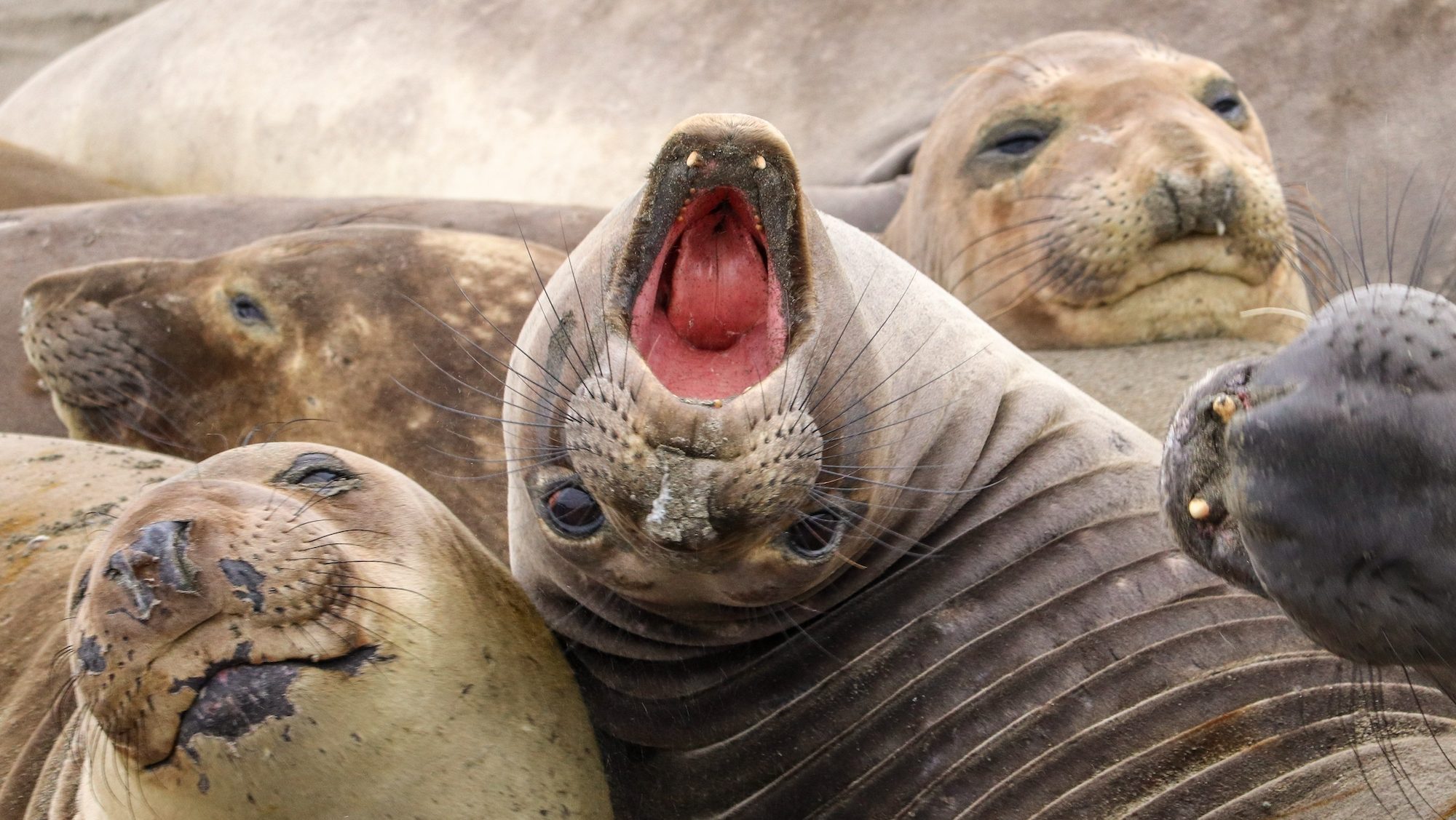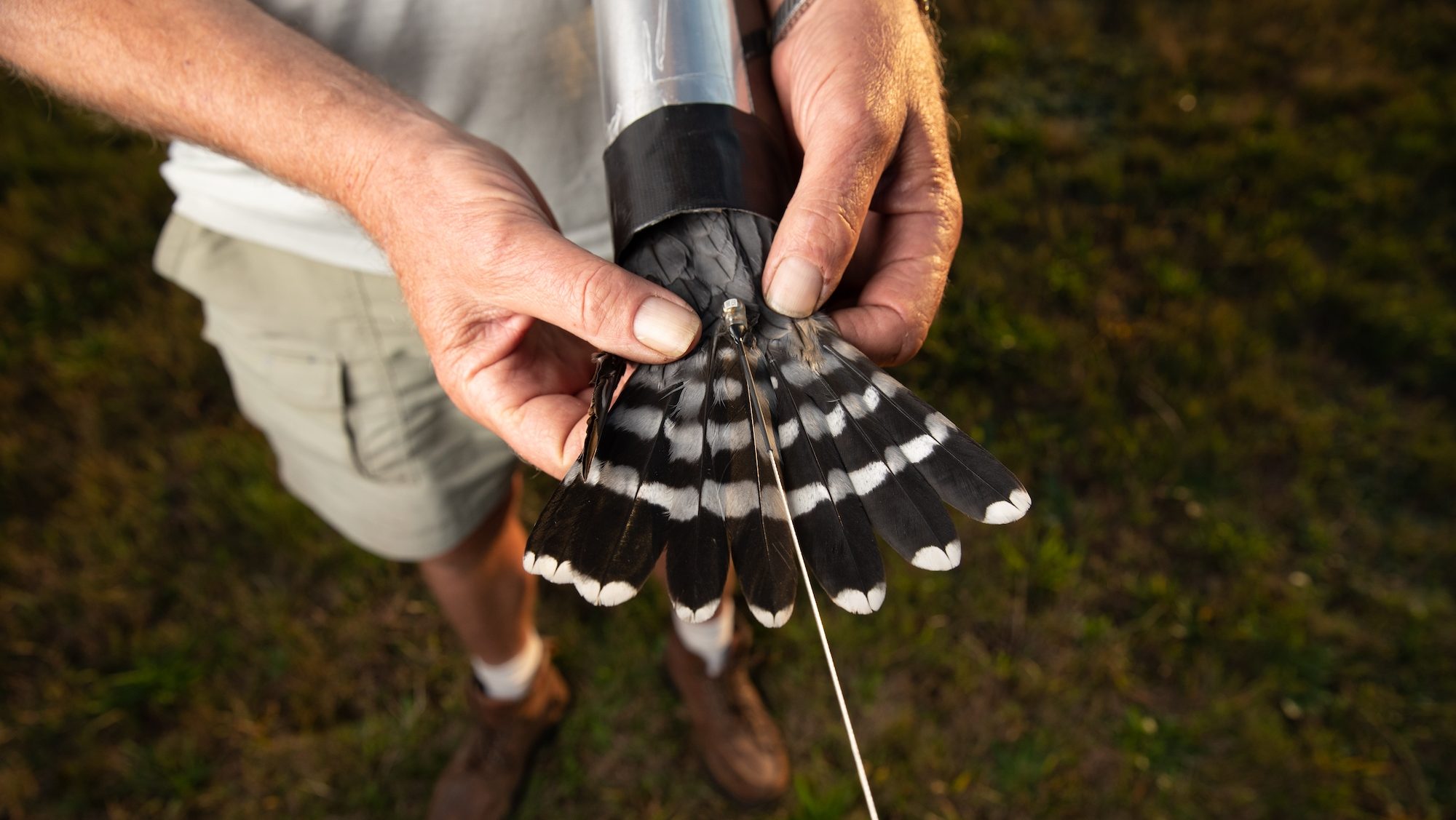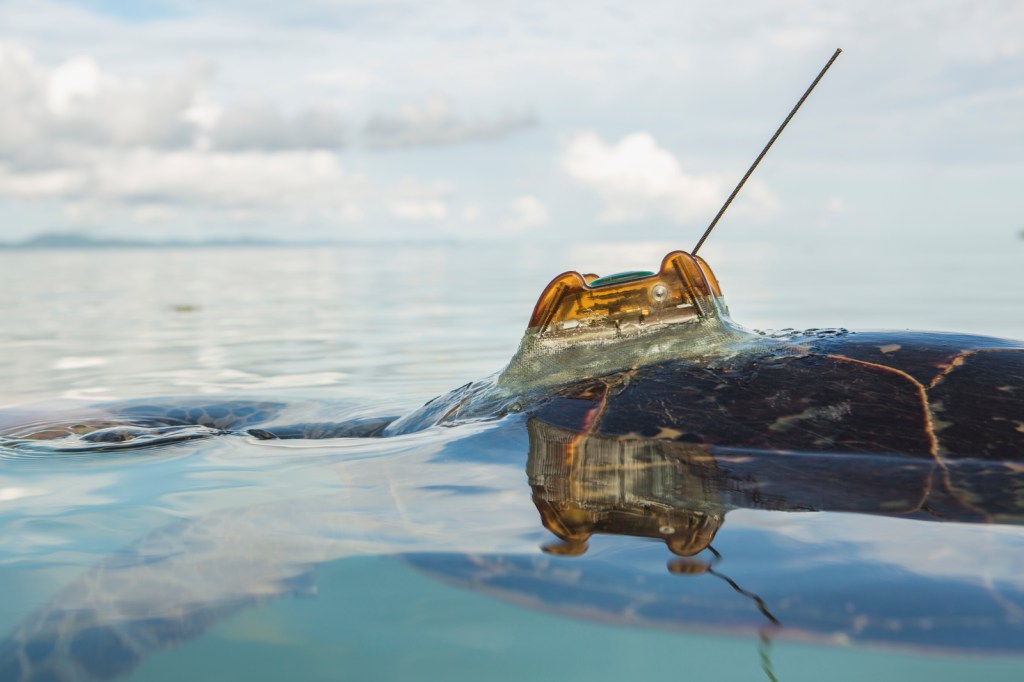Tiger sharks equipped with 360-degree cameras and GPS devices in the Bahamas Banks helped researchers document the largest seagrass ecosystem in the world.
In the Arctic, elephant seals with weather-monitoring boxes glued to their outer fur and skin give reports to satellites to help the World Meteorological Organization create climate models.
Backpacks secured to sea turtles in the Indian Ocean provide researchers with information that helps explain and predict ocean temperatures and currents.
“We can use the natural history and the ecology of an animal for better sensing of the natural world,” says Diego Ellis-Soto, a PhD candidate at Yale University.
And tiger sharks, turtles and elephant seals aren’t the only wildlife capable of providing humans with critical information to predict our weather and climate patterns. Across the globe roam thousands of animals equipped with backpacks, collars and other assorted scientific jewelry used to track the creature’s movement, map critical habitat, and see where they thrive and eventually die.
Ellis-Soto, German researcher Martin Wikelski and Yale ecology professor Walter Jetz argue in a perspective published recently in the journal Nature Climate Change that some of those animals already are, and many others could be providing us with even more information.
“I’m not saying we should equip an animal just to understand meteorology. I’m saying, this is a massive byproduct of information we are already collecting on hundreds of thousands of animals every year,” he says.
“I think it is an untapped goldmine for weather forecasting.”

Canaries in the Coal Mine
Ellis-Soto will be the first to admit the concept isn’t new. Indigenous communities around the planet have long used animal behavior and patterns to help predict changing weather.
In the early and mid-1900s, the metaphorical cliché “canary in a coal mine” was a very literal canary alerting humans to changing conditions like carbon monoxide and toxic gasses. And for the past 20 years, ocean and atmospheric agencies have been calling on sea creatures to help provide data from impossible-to-reach places.
“I think we need to be thinking creatively about the different tools that we can use to monitor all the changes that are happening on the planet, and using animal-borne sensors is one of the tools in the toolbox,” says Brianna Abrahms, an assistant professor and Boersma Endowed Chair in Natural History and Conservation at the University of Washington. “Sensors can be incredibly efficient at collecting data for us that would be really hard to collect otherwise.”
Researchers studying terrestrial animals have lagged behind the curve, largely, Ellis-Soto guesses, because they could, because their study areas are not as prohibitively inaccessible as, say, the depths of the Arctic Ocean. But the time is right to begin using our fellow land animals to help predict the future.

Habitat Help
The information gathered from weather sensors on wildlife could not only be used to benefit humans, but also the creatures themselves.
Right now, data from weather stations scattered in urban and remote areas combined with animal locations can be used to understand where animals spend their time. But Ellis-Soto argues that data paints a very broad, and sometimes not terribly accurate brush.
“If I had a thermometer in my building, my thermometer would tell me it’s 75 degrees Fahrenheit, because I’m inside a building with AC, but a satellite from space, or that weather station, would tell me it’s 120 degrees Fahrenheit,” he says. “So I might even be doing ecology wrong if I use these very coarse products of temperature that the animals aren’t actually even experiencing.”
In cases of extreme heat waves, drought or Arctic blasts, wildlife might be in a certain area but that doesn’t mean they’re spending time in an open field in the direct sun. Perhaps they’re huddled in the shade of a tree where temperatures are 20 or even 30 degrees lower. And those data matter.
It can be used to help explain die-offs and also help us understand where habitat improvements such as planting trees could be most effective.
“I could say, ‘I want this tiny GPS backpack to give me temperature, but I also want to know the humidity and I want to know how many hours in flight they have,’” he says. “We can slowly make like a wish list of what we want animals to measure.”

Pigeon Predictors
Expanding this kind of research won’t be cheap, but the rewards could be significant. Consider the homing pigeon.
Researchers in London have affixed air pollution monitors to the backs of homing pigeons and followed them as they fly naturally throughout the city. That information, combined with data from existing stations, can give a much more precise and accurate read on neighborhoods and areas most impacted by unhealthy air.
“These animals are way cheaper to equip, and they’re way less annoying than a drone,” he says. “If our birds decline, we lose our ability for weather forecast understanding. Our birds can be our biggest assets for climate change monitoring.”
Many of these animals would not require more trapping or disruption, just an additional weather sensor added to the devices researchers are already clipping around necks, legs and even, in the case of the bees, stuck to their backs.
“This can really help us predict changes into the future,” Abrahms says, “and understand what current threats are as well.”




Join the Discussion